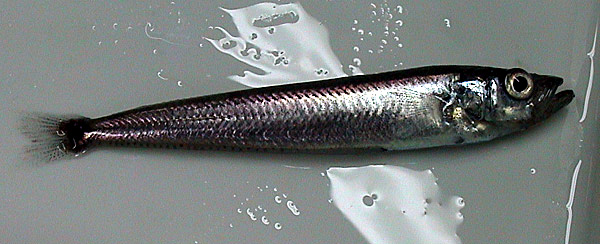Fishy businessClimate change may be to blame for disappearance of Antarctic silverfishPosted July 9, 2010
Adélie penguins across parts of the northwestern Antarctic Peninsula don’t appear to be getting a balanced diet these days. What’s missing? A sardine-sized fish called Pleuragramma antarcticum, more commonly referred to as the Antarctic silverfish. Once upon a time, as the story goes, Antarctic silverfish swam by the thousands in places like Arthur Harbor at the northern end of the peninsula. “That doesn’t happen anymore,” said Joseph Torres, a professor in the College of Marine Science at the University of South Florida It’s been about 15 years since any significant numbers of silverfish were found in the Adélie diet in the area around Palmer Station on Arthur Harbor, according to Bill Fraser, whose work in the region dates back to the 1970s and is part of the Palmer Long Term Ecological Research The scientists traveled aboard the research vessel Nathaniel B. Palmer “What we wanted to do was contrast the different regions in terms of how many silverfish they had and what the diet of the penguins there was like,” Torres explained. “We were curious if the penguin diets reflected what the community was like out there.” Expected resultsThe scientists used two methods to search for the disappearing silverfish. They towed nets from the ship along the relatively shallow waters of the continental shelf near where penguin colonies forage for food. And Fraser’s seabird researchers visited key penguin colonies on various islands. They examined the stomach contents of nearly 60 birds, as well as attached satellite tags on some penguins to monitor their foraging habits. They found silverfish where they expected to find them — in the south, where sea ice and a colder climate persist. They didn’t find them where they expected not to find them — around Palmer Station farther to the north, where ambient winter temperatures are up about 6.5 degrees Celsius since the 1950s and sea ice is a fading memory. Like other parts of the polar food web — such as Adélie penguins and shrimp-like krill — the silverfish rely on sea ice for parts of their lifecycle. For example, the sea ice offers cover when the eggs hatch in November, Torres noted. Without it, he added, “the larvae are exposed to predation in the open water.” Based on the preliminary results of the net tows and diet samples, Fraser said, “I think we can pretty substantially confirm that the silverfish have, in fact, disappeared from a very specific region of the Antarctic Peninsula, which happens to be the region that has experienced the most rapid winter sea ice loss over the last three decades.” On the other hand, silverfish still account for a substantial part of the the penguin diet for birds at Charcot and Avian Island to the south. While still awaiting more definitive analysis, Fraser said he estimated that Pleuragramma made up about half of the meals for birds on Avian and upwards of 80 percent for the most southerly Adélies at Charcot. OutclassedBut the story is more complicated — and possibly grimmer — than the scientists first suspected. While they found Antarctic silverfish in the south, they saw fish dominated by only one age class, a cohort they estimate to be about 9 or 10 years old. The absence of a younger age class, a new generation, is worrisome, according to Torres. “It tells me that the population isn’t getting any new recruits,” he said. “What we’re looking at is a population that is not a healthy one.” In fact, the only bright spot was around Joinville Island in the extreme north, where currents from the Weddell Sea bring in new silverfish from the still healthy populations on the eastern side of the peninsula. But thickening sea ice and blustery weather that dropped the wind chill to minus 50 degrees centigrade made for challenging working conditions there. “The ocean was freezing too fast. We were really limited in terms of what we could do and where we could go,” Fraser said.1 2 Next |



For USAP Participants |
For The Public |
For Researchers and EducatorsContact UsU.S. National Science FoundationOffice of Polar Programs Geosciences Directorate 2415 Eisenhower Avenue, Suite W7100 Alexandria, VA 22314 Sign up for the NSF Office of Polar Programs newsletter and events. Feedback Form |




